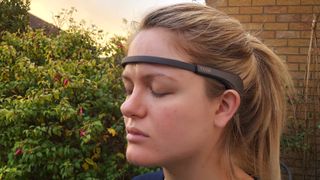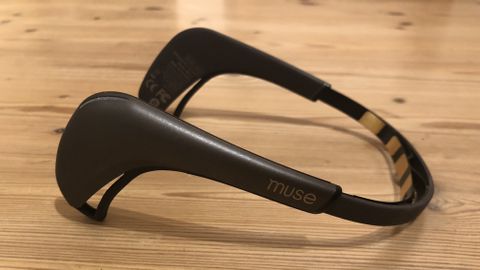Why you can trust TechRadar
Battery and charging
- Lasts around 2 weeks with typical daily use
- Takes 2 hours to charge
- Comes with a micro USB cable
There’s a small bar of light on the right ear of the Muse 2, which shows you how charged up the device is.
On a single charge, it lasts for 5 hours of continuous use. That means that, assuming you would spend a few minutes setting it up per day and then meditate for 15 minutes, you’d expect it to last for around two weeks before you’d need to charge it back up again.
According to Muse, charging the headband from empty back up to full again should take around two hours. We found that to be the case when we were charging it back up too, which you can do easily with a provided micro USB cable that connects up to any USB plug.

Verdict
The Muse 2 is an insightful and ambitious wearable that aims to help you meditate, as well as help you keep track of your meditation practice over time.
That means it’s bound to appeal to those who already meditate and want to get to grips with their practice and the impact it has on their body and mind. It’s also useful for those who are keen to start meditating but want more structure or hard data to keep them motivated.
It tracks a range of metrics thanks to its bevy of sensors, including an EEG, PPG and pulse oximetry, accelerometer and gyroscope.
After calibration, all of these sensors work well and collect data that’s presented in graphs and rewards badges depending on how you meditated. It’s great to see how this data stacks up over time, as well as building awareness about what life events may have affected your practice.

However, for the Muse 2 to have more lasting value, we’d have liked to see more explanation and benchmarking about our results.
For example, it’s interesting to see an EEG graph and find out we heard 18 birds during the Mind meditation. But is that good? Should we be aiming for more calm? And how does it compare to anyone else?
You could argue that you don’t need to know if it’s good or bad given it’s your personal meditation practice, but some more context would be useful given that some of the numbers and badges can feel a little arbitrary.
As well as some personalization and context, we’d also like to be able to dig deeper into the graphs for all of the meditation types other than the Mind meditation. Right now, that’s the only one with a super detailed graph you can interact with.
Having said that, we found the data it did collect to be interesting and really motivating for continuing our practice. We got a kick out of seeing the graphs and comparing them day by day during the testing.
It’s hard to recommend such a new and different device that costs $249 / £239 (roughly AU$350), but if you have the budget, you want to meditate, and you know you’re motivated by data, badges and progress tracking, it could well be a life-changing piece of technology.
First reviewed: January 2019
Becca is a contributor to TechRadar, a freelance journalist and author. She’s been writing about consumer tech and popular science for more than ten years, covering all kinds of topics, including why robots have eyes and whether we’ll experience the overview effect one day. She’s particularly interested in VR/AR, wearables, digital health, space tech and chatting to experts and academics about the future. She’s contributed to TechRadar, T3, Wired, New Scientist, The Guardian, Inverse and many more. Her first book, Screen Time, came out in January 2021 with Bonnier Books. She loves science-fiction, brutalist architecture, and spending too much time floating through space in virtual reality.

